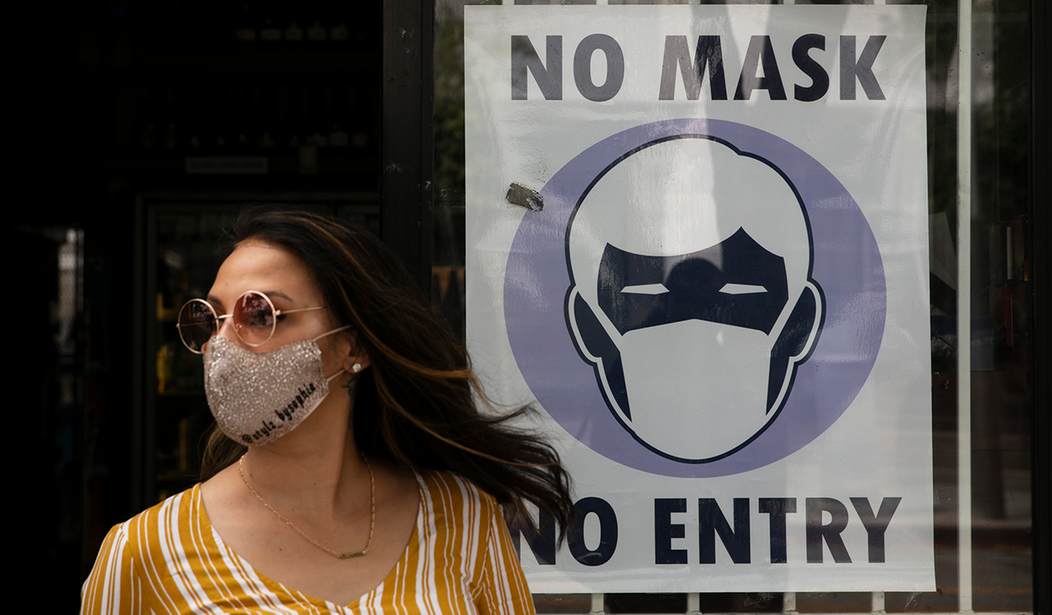Last year, we began what was supposed to be a short lockdown to flatten the curve of COVID-19-related hospitalizations. It's a year later and we are still mostly locked down. This past year has been particularly hard on young adults, according to a story in The Wall Street Journal titled "Pandemic Loneliness Is Hitting Young Adults Especially Hard."
In fact, "61% of young people ages 18 to 25 reported serious loneliness in the prior month, compared with 24% in adults ages 55 to 65," wrote reporter Anne Marie Chaker. These statistics came from a report from Making Caring Common, part of the Harvard Graduate School of Education.
While the science regarding the spread of the virus might have justified the lockdowns and social isolation that we all have endured during the past year, it did not take into account the effects of this drastic, forced isolation on people's psyches. Those of us blessed to be in a loving relationship have the luxury of going home (or interrupting our work from home) to connect with someone, to talk to that person without a mask and to touch them and see them smile -- or frown.
For those in abusive relationships as adults, or even worse, as children, the results can be disastrous. No longer can you go to work or school and socialize normally. Instead, you are stuck at home -- in a toxic situation.
For those who are living alone, life can be incredibly isolating. You may never see anyone without a mask and never see a smile, or even a frown. While connections over Zoom, Webex or the phone are better than total isolation, they are no replacement for in-person connection. A person's age makes a difference. If you are 60, a year might not seem like that long. After all, it represents just one-sixtieth of your life. If you are 20, it represents one-twentieth of your life, three times as long.
This month, the Proceedings of the National Academy of Sciences published a report titled "Lifestyle and mental health disruptions during COVID-19" that reviewed data and analyses comparing college students pre- and post-pandemic.
Recommended
The authors -- Osea Giuntella, assistant professor of economics at the University of Pittsburgh; Kelly Hyde, a Ph.D. student at the University of Pittsburgh; Silvia Saccardo, assistant professor in the Department of Social and Decision Sciences at Carnegie Mellon University; and Sally Sadoff, associate professor at the Rady School of Management at the University of California, San Diego -- concluded that the lockdown has had a dramatic negative impact on college students, far worse than its impact on older adults.
They documented "large disruptions to physical activity, sleep, time use, and mental health. At the onset of the pandemic, average steps decline from 10,000 to 4,600 steps per day, sleep increases by 25 to 30 min per night, time spent socializing declines by over half to less than 30 min, and screen time more than doubles to over 5 h per day." Anyone who looks at this information can imagine the incredible negative impact on these students. More time alone and on a screen and less activity: a recipe for disaster.
A person's college years should be the time to move away from parents and away from previous relationships and go on to experience the wider world and develop community. As a mother of a college freshman and college junior, I can tell you that they are finding it incredibly hard to meet new people and forge new relationships in an environment where social interaction is limited. Our students are suffering from loneliness and isolation. While older adults may have already established relationships and activities that can more easily weather the storm of social distancing, many college students have not had that opportunity.
The results can be disastrous. The report found that "Over the course of the pandemic from March to July 2020 the proportion of participants at risk for clinical depression ranges from 46% to 61%, up to a 90% increase in depression rates compared to the same population just prior to the pandemic." The forced isolation and limits on activity that society has imposed in order to limit the virus have come at an enormous cost to our college students.
While we can't change what happened last year, we can change what we are doing now. As more people gain immunity due to vaccines and prior exposure, and as the weather gets warmer, we need to rethink what activities and which people are allowed on campus, and how we encourage connection. We also need to take into account how to build in activities that will encourage interaction, connection and community.
























Join the conversation as a VIP Member